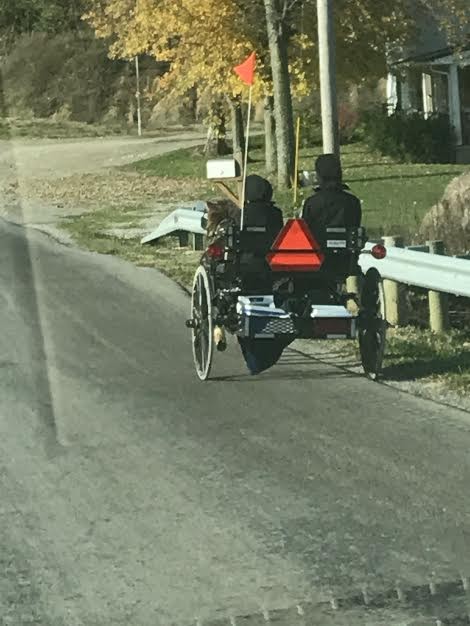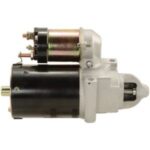The Amish are known for their distinct way of life, often characterized by simple living and a separation from many modern technologies. One frequently asked question is: Do Amish Drive Cars? The answer is nuanced and reveals a lot about Amish culture and their approach to the modern world. While you won’t see an Amish person behind the wheel of their own car in most communities, the reality is more complex than a simple yes or no.
Preserving Community and Tradition
The primary reason Amish communities generally prohibit car ownership is rooted in their desire to preserve their close-knit communities and way of life. The Amish fear that owning automobiles would erode the fabric of family and community life, much like they’ve observed in broader society. They see how cars have contributed to suburban sprawl, isolating people and weakening community bonds. By consciously choosing not to own cars, the Amish make a powerful statement about the importance of community and connection.
Churches in Amish society remain geographically close because horse-and-buggies necessitate shorter travel distances. This naturally fosters daily interactions and mutual reliance among community members. While the financial savings from avoiding car payments, insurance, and gas are considerable, the core motivation is deeply social and communal. Like with many aspects of technology, the Amish approach to cars is about carefully navigating modernization while upholding their core values.
Necessity and Practicality
Despite not owning cars, the Amish are not completely isolated from them. The reality of modern life sometimes requires longer distances than a horse-drawn buggy can practically cover. For significant life events such as weddings or funerals in distant locations, relying solely on buggies is simply not feasible. Therefore, it’s common practice for Amish individuals and families to hire non-Amish drivers to transport them over longer distances.
These “Amish taxis” are driven by non-Amish individuals and can become a significant expense for Amish families, potentially offsetting the financial benefits of not owning a car. The frequency of hiring drivers varies. In more conservative, smaller Amish settlements, it might be rare. However, in larger Amish communities, it can be a regular occurrence, even daily. In these areas, informal networks of “Amish taxi” drivers, who make a living catering to the transportation needs of the Amish, are common.
While some outsiders might view hiring drivers as hypocritical, the Amish see it as a necessary compromise. For them, the distinction remains clear: owning a car represents an integration with the outside world that could disrupt their community, while using a car driven by someone outside their community allows them to maintain a degree of separation and control.
Beyond Buggies: Buses, Vans, and More
Cars aren’t the only modern transportation method the Amish might utilize. For longer journeys, modes of transport like trains and buses are generally acceptable. Air travel, however, is typically discouraged. Yet, even with air travel, exceptions exist. In remote Amish settlements like those in Montana, where distances to other communities are vast, air travel may be used in cases of urgent need or to visit family far away. This highlights a recurring theme in Amish interactions with technology: when complete avoidance is impractical, they seek the “next best thing” that maintains a degree of separation.
Bus lines specifically cater to Amish communities. The Pioneer Bus, for example, is well-known for connecting Amish communities in the Midwest with Pinecraft, Florida, especially during winter months. Greyhound buses and 15-passenger vans are also frequently used. For large families traveling together, chartering a deluxe motorcoach bus can even be a practical option.
Changing Times: Gradual Shifts in Car Practices
Interestingly, the landscape of Amish transportation is slowly evolving. In some communities, like the “Lobelville Amish” in Tennessee, a more nuanced approach to car ownership is emerging. Here, the community collectively owns a van, and designated members are permitted to drive it. The rationale is that community ownership and having drivers within their group actually increases self-reliance, reducing dependence on external “Amish taxi” services. While horse-and-buggies remain central, this model represents a gradual embrace of automobile use, driven by practicality and a desire for greater autonomy. This trend suggests a potential future where more Amish communities might explore similar controlled forms of car ownership.
Tractors: A Horsepower Compromise
Within some Amish settlements, tractors serve a dual purpose, blurring the lines between farm equipment and personal transport. Tractors, while primarily for agricultural work, offer a faster alternative to horses and buggies for local travel. They don’t require feeding like horses and can cover greater distances than buggies, albeit still with limitations.
Initially adopted for farming, Amish communities in places like Garnett and Partridge, Kansas, and Oakland, Maryland, quickly recognized the convenience of tractors for quick trips into town. This adaptation highlights the Amish pragmatism – utilizing technology in ways that address practical needs while remaining within the boundaries of their community norms.
Business Needs: Cars for Commerce
The Amish also differentiate between car ownership for business and personal use. Some Amish church districts may be more lenient toward owning vehicles strictly for business purposes. Recognizing the demands of entrepreneurship and the need to remain competitive in the modern economy, some allowances are made. As a highly entrepreneurial group, the Amish are keen not to be economically disadvantaged. The example of Wayne Helmuth and Noah Yoder illustrates this point. While Wayne Helmuth, like many Amish, doesn’t personally drive a car for personal reasons, his non-Amish shop helper, Noah Yoder (who grew up in a less strict Mennonite sect), drives a minivan for business-related activities, reflecting a pragmatic approach to business needs within a changing world.
Mennonites: A Broader Spectrum
It’s important to distinguish between Amish and Mennonites. While both groups share Anabaptist roots, Mennonites encompass a much wider range of beliefs and practices regarding technology. Old Order Mennonites share similarities with the Amish in their approach to cars, often abstaining from car ownership. However, many conservative Mennonite groups, while maintaining plain dress and other traditional values, do permit car ownership. This distinction underscores that the issue of car ownership is specific to certain groups within the broader Anabaptist tradition and is not a uniform practice across all related groups.
Frequently Asked Questions
Do the Amish drive automobiles?
No, the vast majority of Amish do not drive cars personally. Exceptions are very limited and community-specific, although riding in cars as passengers is generally accepted.
Are there any Amish churches that allow automobile ownership?
No Old Order Amish churches officially permit personal car ownership. However, some may show more flexibility regarding car ownership strictly for business purposes.
Key Takeaway: Usage vs. Ownership
Ultimately, the Amish stance on cars boils down to the crucial distinction between owning and using. Owning a car is perceived as a pathway to individualism and a weakening of community bonds, core tenets of Amish culture. Simply using a car, when necessary, by hiring a non-Amish driver, is viewed as a compromise that allows them to participate in the modern world to a degree without fundamentally altering their community structure and values. This careful balancing act reflects the Amish approach to navigating the complexities of modern life while staying true to their traditions.

